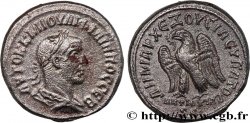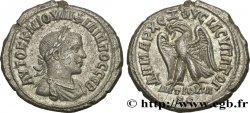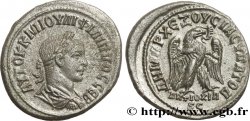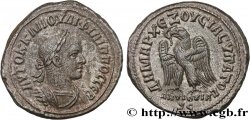E-auction 587-544579 - bpv_154109 - PHILIPPUS II Tétradrachme syro-phénicien
You must signin and be an approved bidder to bid, LOGIN TO BID. Accounts are subject to approval and the approval process takes place within 48 hours. Do not wait until the day a sale closes to register. Clicking on « bid » constitutes acceptance of the terms of use of cgb.fr private e-auctions.
Bids must be placed in whole Euro amounts only. The sale will start closing at the time stated on the item description; any bids received at the site after the closing time will not be executed. Transmission times may vary and bids could be rejected if you wait until the last second. For further information ckeck the E-auctions F.A.Q.
NO BUYER'S FEE.
NO BUYER'S FEE.
| Estimate : | 225 € |
| Price : | 84 € |
| Maximum bid : | 113 € |
| End of the sale : | 15 July 2024 15:05:00 |
| bidders : | 11 bidders |
Type : Tétradrachme syro-phénicien
Date: 249
Mint name / Town : Antioche, Syrie, Séleucie et Piérie
Metal : billon
Diameter : 28,00 mm
Orientation dies : 12 h.
Weight : 10,90 g.
Rarity : R2
Coments on the condition:
Très faible usure, belles surfaces mais revers très légèrement piqué
Catalogue references :
Predigree :
Cet exemplaire est le 0453_004 de la base TSP, il provient des plateaux d’un marchand anglais ambulant en octobre 1995
Obverse
Obverse description : Tête radiée de Philippe II auguste à droite (O).
Obverse legend : AUTOK K M IOUL FILIPPOS SEB, (Autokratoros Kaisaros Markos Ioulios Filippos Sebastos)
Obverse translation : (L’empereur césar Marc Jules Philippe auguste).
Reverse
Reverse legend : ANTIOXIA / S|C À L’EXERGUE.
Reverse description : Aigle debout à droite, les ailes largement déployées, tête à droite et queue à gauche, tenant une couronne feuillée dans son bec.
Reverse legend : DHMARC - EX OUSIAS UPATOD
Reverse translation : (Revêtu de la puissance tribunitienne / Consul pour la quatrième fois / avec l’accord du Sénat d’Antioche).
Commentary
Dans la base TSP maintenue par Michel Prieur, huit exemplaires, dont trois en musées, à l’ANS, Yale et à Jerusalem (trouvaille de Capharnaum), sont maintenant répertoriés pour ce type.







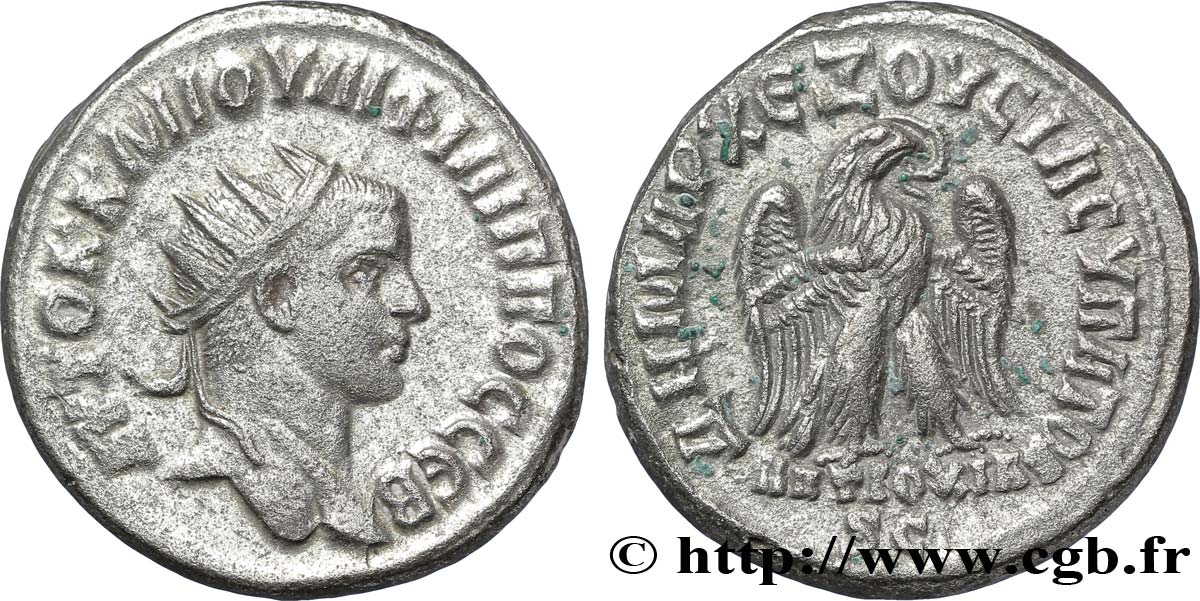
 Report a mistake
Report a mistake Print the page
Print the page Share my selection
Share my selection Ask a question
Ask a question Consign / sell
Consign / sell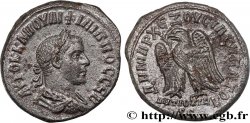
 Full data
Full data